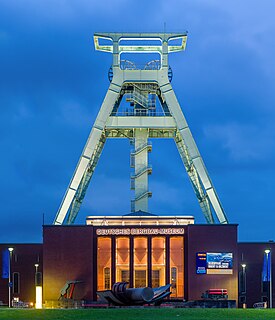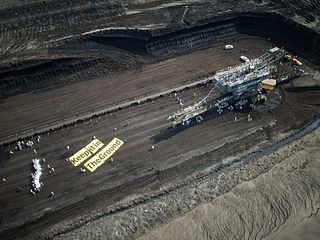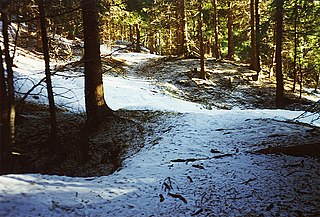 W
WBagger 288, built by the German company Krupp for the energy and mining firm Rheinbraun, is a bucket-wheel excavator or mobile strip mining machine.
 W
WBagger 293, previously known as the MAN TAKRAF RB293, is a giant bucket-wheel excavator made by the German industrial company TAKRAF, formerly an East German Kombinat.
 W
WBagger 1473 is a bucket-wheel excavator left abandoned in a field in the municipality of Schipkau in Germany.
 W
WMining law is the branch of law relating to the legal requirements affecting minerals and mining. Mining law covers several basic topics, including the ownership of the mineral resource and who can work them. Mining is also affected by various regulations regarding the health and safety of miners, as well as the environmental impact of mining.
 W
WDMT-Gesellschaft für Lehre und Bildung mbH (DMT-LB), based in Bochum, is a collective association of the German coal mining industry and acts as the funding organisation of Deutsches Bergbau-Museum Bochum and Technische Hochschule Georg Agricola. It was established as the Westfälische Berggewerkschaftskasse (WBK) in 1864 and merged with the Steinkohlen-Bergbau-Verein (Stbv) and Bergbau Forschung GmbH under the auspices of DeutscheMontanTechnologie e.V. (DMT) in 1990.
 W
WEnde Gelände is a civil disobedience movement occupying coal mines in Germany to raise awareness for climate justice. Ende Gelände has been organizing mass civil disobedience actions against coal mines in Rhineland, Lusatia and Leipzig since 2015. Since 2017 it has participated in civil disobedience protests against coal mining and fracking in Poland, the Netherlands and the Czech Republic. It supports Venice´s movement against big cruising ships. Annual protests in Germany have had from 3000 up to 7000 participants. It regularly supports anti-racist rallies in Germany and has hosted a range of smaller local protests since 2018.
 W
WEnde Gelände 2016 was a large civil disobedience protest movement in Germany to limit global warming through fossil fuel phase-out.
 W
WEnde Gelände 2017 was a large civil disobedience protest movement in Germany to limit global warming through fossil fuel phase-out.
 W
WEnde Gelände 2018 were a series of events of a mass movement for climate justice in the Rhenish lignite mining area in Germany. The non-violent direct action civil disobedience events were targeted against coal-based power generation through RWE Power AG and demanded the "immediate fossil fuel phase-out" based on climate justice and climate change mitigation.
 W
WEnde Gelände 2019 was a series of large-scale events of a movement for climate justice in Germany.
 W
WThe Halde Rheinpreußen is a spoil tip in the German city Moers which lies 70 metres (230 ft) above its ambit. It is part of the category Panoramas of the Ruhr Industrial Heritage Trail.
 W
WThe Kupferschiefer or Kupfermergel, is an extensive and remarkable sedimentary unit in Central Europe. The relatively monotonous succession is typically 30 to 60 centimetres and maximum 2 metres (6.6 ft) thick, but extends over an area of 600,000 square kilometres (230,000 sq mi) across the Southern Permian Basin. The Kupferschiefer can be found in outcrop or in the subsurface straddling six countries, including parts of the southern North Sea. The lateral equivalent outcropping in England is called Marl Slate.
 W
WThe Lusatian Lake District is a chain of artificial lakes under construction in Germany across the north-eastern part of Saxony and the southern part of Brandenburg. Through flooding as a part of an extensive regeneration programme, several decommissioned lignite opencast mines are in the process of being transformed into Europe's largest artificial lake district. However, the requirements of the project, especially the necessary water resources, are controversial.
 W
WA Pinge or Binge ("binger") is the name given in German-speaking Europe to a wedge-, ditch- or funnel-shaped depression in the terrain caused by mining activity. This depression or sink-hole is frequently caused by the collapse of old underground mine workings that are close to the Earth's surface. Unlike natural landforms, a Pinge is a direct result of human activity. The term has no direct equivalent in English, but may be translated as "mining sink-hole", "mine slump" or, in some cases, as "glory hole".
 W
WA Steiger is the title of a mining foreman or mine manager, used in German-speaking Europe. He bears responsibility for part of the mine and the people subordinated to him. The name is derived from the former role of a Steiger, who continually had to climb into and out of the pit. The Steiger is celebrated in a very popular German mining song the so-called Steigerlied.